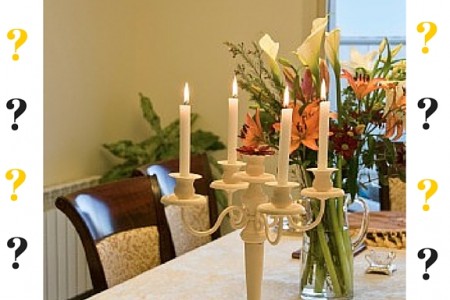
I recently started a weekly post featuring a moral dilemma for people to discuss at the Shabbos table. I email it every Thursday and it has become quite popular here in Baltimore. Many people tell me how their whole family gets involved when the questions are presented at the table, and everyone is asked to share their opinion.
I have been using moral dilemmas to teach for many years. Many of my students have told me that some of the most interesting parts of my classes have been the moral dilemma stories.
At my own Shabbos table, I almost always share a moral dilemma story that relates to a conflict between two mitzvos. My children and guests have consistently told me how much they enjoy responding to these dilemmas.
Recently, Baltimore Jewish Life started publishing my Moral Dilemmas to Ask Your Family at the Shabbos Table and the articles have been shared widely throughout the area. Here are four recent posts:
Stealing Customers
The Generous Philanthropist
Stealing Wool from Nazis
Treif Shnitzels
While there are several other superb sources that provide halachic discussions to share at the Shabbos table (such as What If, Veharev Na I & II, and the Business Halacha Institute), this newsletter stands out as an outreach resource in the following respects:
- I choose moral dilemmas that I believe are shaveh lekol nefesh – I have taught them successfully to secular audiences as well as religious ones. These are issues that can be appreciated by a secular audience. They can also engage both children and adults. At the same table you can engage religious adults as well as non-religious adults.
- It contains a moral dilemma where the listener can usually try to use his or her own reasoning or intuition to try to figure out the answer.
- A plausible argument can be made for either side of the question. This lends itself to engaging “give and take” debate and discussion.
- I use true stories that have relatable, real-world content. They are not outlandish scenarios and they are therefore more relevant and interesting.
If you think this resource would help engage your family, guests and students, I would be happy to send it to you every week – click here to subscribe. Feel free to share it as you would like.
THE ADVANTAGES OF USING MORAL DILEMMAS TO TEACH
I would like to briefly explain the benefits of using moral dilemmas to engage students. Here are some reasons why I feel that using moral dilemmas to teach can be so powerful:
- They are interesting. A good moral dilemma can be presented as a story in which the protagonist faces a moral quandary about making a proper decision. A moral dilemma usually provides two or three choices and each choice seems compelling. If it is a remarkable story, your audience will remember it and become engaged with it much more. We see scores of examples from Chazal that demonstrate that using stories and questions are very effective teaching tools.
- It is interactive. A simple story can be inspiring and interesting. But presenting a moral dilemma evokes an interactive response. It is a story that challenges your audience how to think for themselves. Your students will not simply be passive learners; they will now become active learners and the lessons will stick with them longer.
- They give an opportunity for people to share. People often love a chance to participate, share their opinion and be heard by others. This gives them that opportunity to be heard and interact.
- They can be highly instructive to make common life decisions. Exploring moral dilemmas can be a great training ground for making common life decisions. Many of our major decisions in life are moral dilemmas – questions that challenge us with a choice of how to decide, where each side contains a compelling argument. Who to marry – which quality is most important in a spouse? Which job to take – what is more important, happiness or making more money? Which city to live in – a bigger house but in a less developed Jewish community? Budget – what is most important to spend on? How to give to charity – which cause is a more important priority? Learning about moral dilemmas helps train a person to think about Jewish priorities. When two important values are in clash, which one is more important?
- They can be a portal to teach a lot of Torah. I often try to find scenarios that present moral dilemmas between two mitzvos. In order to resolve the dilemma, it is important to try to assess the parameters and limits of each mitzvah. This provides a great opportunity to learn about each mitzvah, in addition to the specific answer to the dilemma.



















